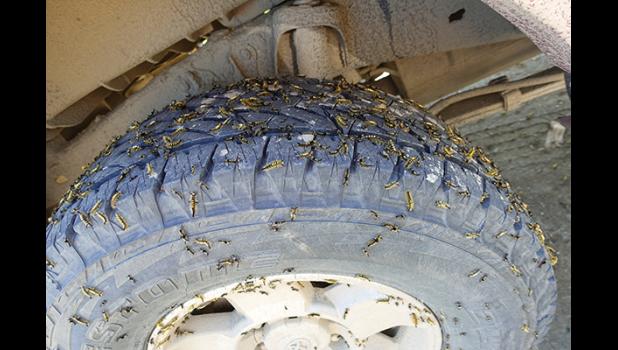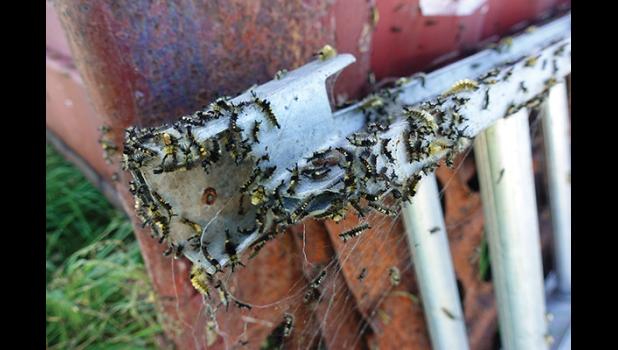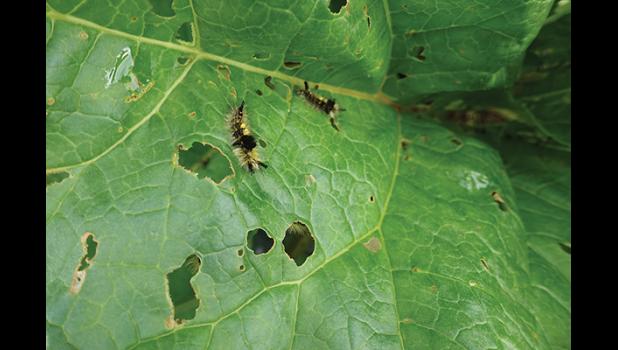Rusty tussock moths invade Seward Peninsula
The rusty tussock moth has invaded the tundra in the Nome area, an infestation of the species not seen this far north before.
The hungry little caterpillars, the larval stage of the moth, chew their way through a wide variety of vegetation. Brown patches on the tundra, willow bushes cleared of leaves and even chewed up rhubarb bear testimony to their great numbers and enormous appetite.
“They have a range of hosts,” said Dr. Stephen Burr, entomologist with the U.S. Forest Service based in Fairbanks. While they are found in large numbers on the willows locally they also can eat conifers, blueberry bushes and other types of vegetation according to Dr. Burr. Scientists describe them as “polyphagous,” meaning they eat a variety of plants.
The critter’s scientific name is Orgyia antiqua, and also known as the Vapourer moth, the rusty tussock moth is in the family Erebidae. They are native to Europe but have been in North America for a long time.
Dr. Burr checked records and found Alaska has seen infestations in the Mat-Su Valley in 2010 and there have been outbreaks in 2003 and 1997. In the Mat-Su 55,000 acres were affected but damage to vegetation was not permanent. In Fairbanks they did eat blueberries. Whether they will be damaging local berries Dr. Burr could not say.
The caterpillars are dark and hairy and named because of the “tussocks” of hair along their back. The adult male flies, the female does not. When they appear in large numbers, as they are doing around Nome, they can defoliate large areas. There is one generation a year and the infestations generally don’t last for more than three years. The eggs are laid on the host material, usually willows, in the fall and the eggs hatch the following spring.
One characteristic of the moth is they can cause dermatitis, a type of skin irritation, if people touch the hairs of the caterpillars. “If there are a lot of caterpillars, and their hairs are in the air, my eyes always get really itchy,” said Dr. Connie Mehmel, a U.S. Forest Service entomologist based in Wenatchee, Washington. “Most people are allergic, and they can really cause skin irritations.” She said the hairs of the caterpillar look like tiny harpoons under the microscope.
Because of damage to forests in Northern California, Oregon, and Washington during tussock moth outbreaks the U.S. Forest Service has sprayed affected areas with an innovative pesticide. A lab in Corvallis, Oregon concocted a thick liquid from a virus that kills the moths. The virus is mixed with water and molasses and sprayed on the forest by helicopter. The virus does not affect other insects or animals.
This year in the Blewett Pass area of Central Washington they sprayed for two days in June. In the mid-70s a serious outbreak was sprayed with DDT, a toxic chemical now banned. That was the last time the pesticide was ever used in a national forest, according to Dr. Mehmel.




